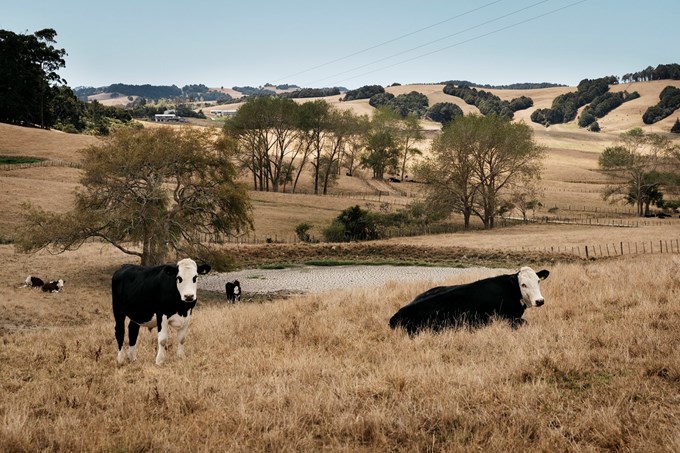Te-Tāruke-ā-Tāwhiri: Auckland’s Climate Plan is our region’s blueprint for halving our emissions by 2030, reaching net zero emissions by 2050 and preparing for the impacts of climate change.
The digital plan launches online today, 8 December, with an Auckland Conversation event about climate change this evening. Learn more about the plan at climateAKL.co.nz
Mayor Phil Goff welcomes the launch of the digital plan, saying climate change remains a critical issue for Auckland.
“Te-Tāruke-ā-Tāwhiri: Auckland’s Climate Plan is the blueprint for how Auckland can respond as a region to the threats posed by climate change,” he says.
“The Plan calls for a range of actions from central government, the private sector, NGOs, community groups and individuals, all of which have a role to play in reaching our emissions reductions goals—this is not something the council can achieve on its own.
“Auckland Council is already contributing towards climate action, including by helping Auckland develop a compact urban form, enabling an increased uptake of public transport, walking and cycling options, and planning for how the city can adapt to the impacts of a changing climate.
“In addition to this action already underway, my 10-year Budget proposal includes an extra $150 million to further accelerate our response through measures such as bringing forward the electrification of our bus fleet, investment to divert more waste from landfill and planting more than 11,000 street trees and 200 hectares of native forest.”
Looking backwards, moving forwards
Auckland Council declared a climate emergency in June 2019 and since then staff have been working in partnership with mana whenua, businesses, industry, NGOs, communities, and government to finalise the plan.
Digitising the text is the next milestone, which follows the council’s Environment and Climate Change Committee signing off on Te-Tāruke-a-Tāwhiri in July.
“It’s been a challenging year for our communities right across Tāmaki,” says committee chair Richard Hills, “amongst all the difficulties of COVID I am proud that as a council and a city, we have not forgotten about our commitments to the climate.”
“Our staff have worked incredibly hard to get us to this point, working across the council whānau, with mana whenua and a wide range of stakeholders to get the plan developed. The online launch of the plan gives everyone ownership over our climate goal and the actions we can all take.
“The recently announced mayoral proposal builds on the great work we’re already doing and gets us on a pathway of ramping up climate action; we will need feedback early next year to drive this work forward” he says.
The council’s chief sustainability officer Alec Tang explains that Te-Tāruke-a-Tāwhiri has eight priority areas all sectors must work on together to meet Auckland’s climate goals:

“We know action will be driven by collaboration, and I am buoyed by the partnerships that are already leading the way and showing us what’s possible,” says Mr Tang.
“Just look at Papatoetoe Food Hub, it’s a fantastic example of council, community and business working together on an initiative that benefits the climate and the community by diverting food waste from landfill, providing healthy, low-cost meals and building community resilience.
“This is what Te-Tāruke-ā-Tāwhiri encourages – if we navigate towards our goals using this plan, and continue building and celebrating partnerships across sectors, then the future is full of possibilities.”
International endorsement
As well as being unique to the needs of Tamaki Makaurau the plan has also been developed to meet international standards for climate plans set by C40, a network of the world’s megacities committed to addressing climate change.
Auckland is a member of the C40 network, and the organisation has formally acknowledged the plan ahead of the digital launch this week.
“C40 supports Auckland's position as a global climate leadership city. We remain steadfast in further strengthening collaboration with Auckland towards implementation of key transformative actions in the plan that aims to deliver a sustainable and equitable future for its communities,” says Milag San Jose-Ballesteros, Regional Director of C40 in the East, Southeast Asia and Oceania region.
“With only decades left for decisive climate action towards net zero carbon by 2050, it is important for cities like Auckland to lead the way and stay the course for ambitious climate action.”

Where to next? Accelerating council action
Now the course is set, we must work together and continue accelerating towards a low-carbon future, reiterates Mr Tang.
Council is establishing a leadership group with representatives from key stakeholders across the region whose sectors will need to give effect to Auckland’s Climate Plan to reach our goals.
They will champion action and collaboration and will help ensure the necessary buy-in required.
For the council, he says there are several levers to pull including better embedding climate considerations into our decision-making and continued advocacy to central government on issues like infrastructure and electrification of vehicles.
Next in focus is the 10-year budget deliberations, which will shape what action in the plan the council can directly fund.
While the consultation document isn’t yet set the Mayoral Proposal for the ten-year budget was released on 01 December. It includes a proposal to increase spending on programmes to reduce greenhouse gas emissions and respond to climate impacts by $150 million.
Key outcomes of the proposal built on the council’s existing work include:
- no more diesel buses added to the existing fleet from 01 July 2021 and working with government to achieve a 50 per cent electric and hydrogen fleet by 2030
- significantly expanding our resource recovery network to divert more waste from landfill and encourage a more circular economy,
- increasing our investment into regional partnerships and planting 11,000 street trees and converting hectares of farmland to native forest.


